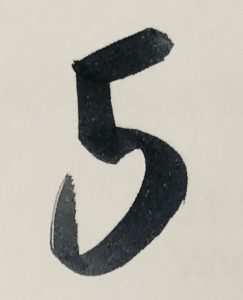 Earlier this year, I found a pile of papers from early days of my genealogy research and went through them to see what was of value. As I reported back, I let go of a lot of it and scanned some, and it was a worthwhile, if somewhat tedious, endeavor.
Earlier this year, I found a pile of papers from early days of my genealogy research and went through them to see what was of value. As I reported back, I let go of a lot of it and scanned some, and it was a worthwhile, if somewhat tedious, endeavor.
In a separate project, I’ve been evaluating the source documentation in my Reunion database. The way I cited and processed early sources was not always great, to say the least. As part of this project, I’ve been reexamining each source, which has helped me make the citation better and glean more information.
As I looked at my early research efforts, five things emerged that I wish I’d known back then.
-
Always write down a source or copy a title page when photocopying something. In some cases, while examining the paper pile, I had no idea where the document had come from. In a couple of cases, a little searching online revealed the source. But what a waste of time.
- Assume you’ll remember nothing. I now keep notes in my research log because the work involved in trying to figure out why I copied or downloaded something is another waste of time.
- Siblings matter. Early on, I researched only direct-line ancestors. I think it was because keeping track of collateral relatives felt overwhelming. I know better now. Keeping track of siblings (and cousins!) helps you evaluate information and provides critical clues.
- Indexes are clues, not sources. Some of the early sources in my Reunion database are indexes. Now, I don’t include an index as a source unless I’ve absolutely exhausted the possibilities for finding the actual document that was indexed. There is so much more information available in the actual document than the index itself. And, of course, indexes, which were created after the fact, are almost by definition less reliable than original sources.
- Be really critical. Early on, finding anything that seemed to support an idea I already had felt like a big win and I didn’t necessary examine it critically. But I’ve learned to critically evaluate every bit of evidence. I don’t automatically accept documents that support my hypotheses, nor do I reject evidence that does not. I like to think of it as sources earning their way into my database.
Genealogy is a process of constant learning. We all make mistakes at the beginning and with any luck we learn from them. (I’m still making mistakes and still learning.) Perhaps this short list will help someone avoid a couple of mistakes.
How about you? What do you wish your early-genealogist self had known?

I’m so glad I wasn’t the only beginner who did things like that! I know so much more now. Thank you for sharing so honestly.
Even though I’ve been working on my family for quite a long time, I still consider myself pretty inexperienced. So these insights are very helpful!. Thanks.
This one hits home. Thank you.
Thank you for sharing the list; wish I’d had the list when I started 20 years ago.
I agree about the indexes. I recently saw one that said my ancestor was Armenian…..when looking at the actual page the enumerator was abbreviating American for everyone on the page. I knew Armenian was not correct but someone else might think so. Thanks for your tips!
Vickie
Love this list and I agree 100%. This is sharing material.
Thanks so much, Cathy!
Thank you so much for all your tips! One thought on indexes. I would show that as a source plus the source for the document. After all, the index did lead you to look for the original.
All great advice…I found an indexed burial record on FMP. As always, I checked to see where I might be able to find the original. The good news – FS has it in their catalogue, the bad news – i’ts still not digitized 🙁 And now I can’t order the microfilm, I’ll just have to wait and hope that it’s in line to be done. *sigh*
Teresa, it’s good to at least have a microfilm number, right? I wanted to make sure you’ve seen my blog post on finding elusive images on Family Search. Sometimes you get a message that an image isn’t available when if you approach it from a different angle you can find it. Here’s that post: https://organizeyourfamilyhistory.com/using-family-search-to-find-images-referenced-on-ancestry-screencast/. Another one, on using the Family Search card catalog, might be useful: https://organizeyourfamilyhistory.com/using-card-catalog-find-elusive-documents-family-search/. Apologies if this info is already familiar and you’ve exhausted these options. Just wanted to make sure!
Lovely thoughts, Janine. Definitely tips I remember and some I’ll start using. My favorite?
Not using indexes as source material. *facepalm* I guess I always figured it was an additional clue to leave behind!
Thank you for sharing, and I’m sharing your article on our podcast page!
Thanks for your comment! I think an index is indeed an additional clue. It’s just not proof, in my opinion. So I don’t consider a fact established if I have only an index.